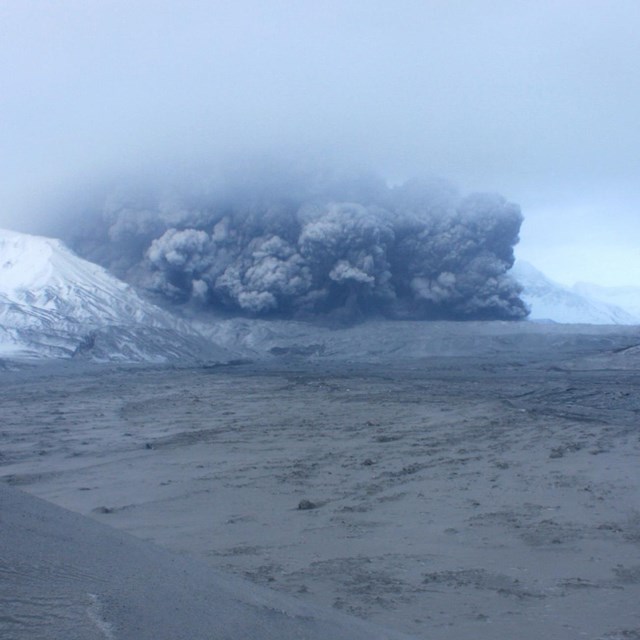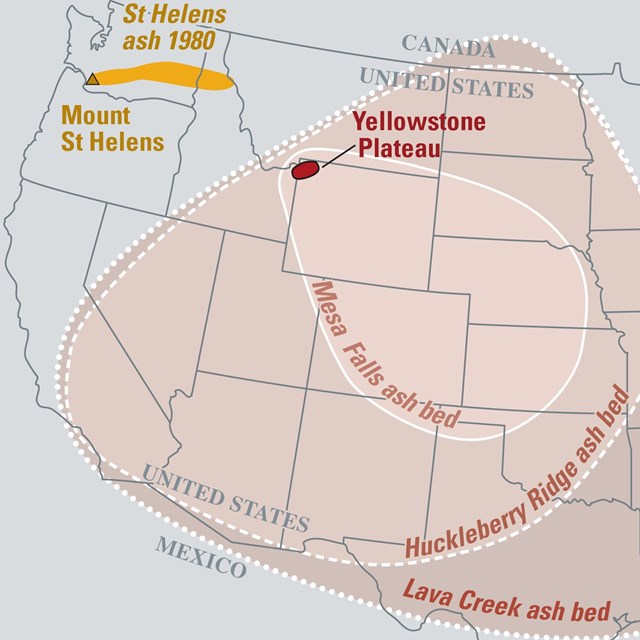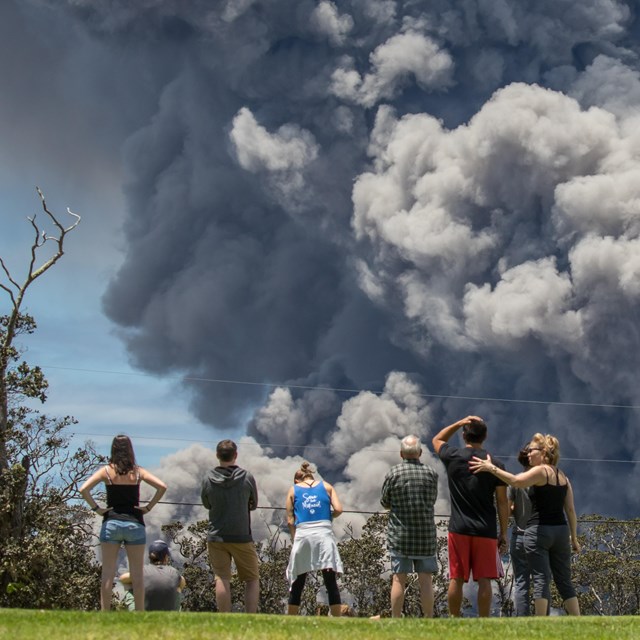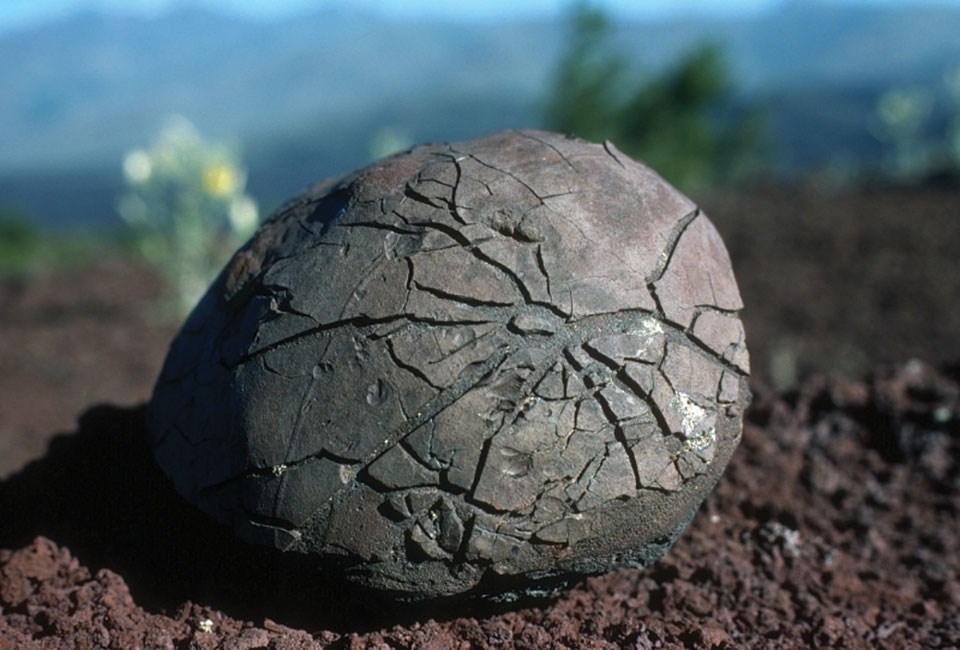
NPS photo.
Introduction
Volcanoes erupt more than just lava. They also erupt a variety of fragmentary material and volcanic gases (water vapor is usually most common), especially during explosive events. The rapid exsolution of gases from magma is the main driver of explosive eruptions, flinging clots of lava into the air in some eruptions, and shattering it into tiny bits (ash) in columns that may rise tens of thousands of feet into the atmosphere.
Collectively, the fragments ejected during explosive eruptions are termed pyroclasts, meaning “fire-broken” from the ancient Greek. Pyroclasts may be ejected while still molten or partially molten, or may consist of solidified magma or of other rock fragments.
Pyroclasts may also include individual crystals, crystal fragments, and fragments of volcanic glass. Cinders, ash, and volcanic bombs are all pyroclasts. Pyroclasts are derived from either the magma itself or are plucked as solid pieces from the walls of the conduit, usually near the surface.
Pyroclasts and pyroclastic rocks may be seen in most parks that contain volcanoes or volcanic rocks.
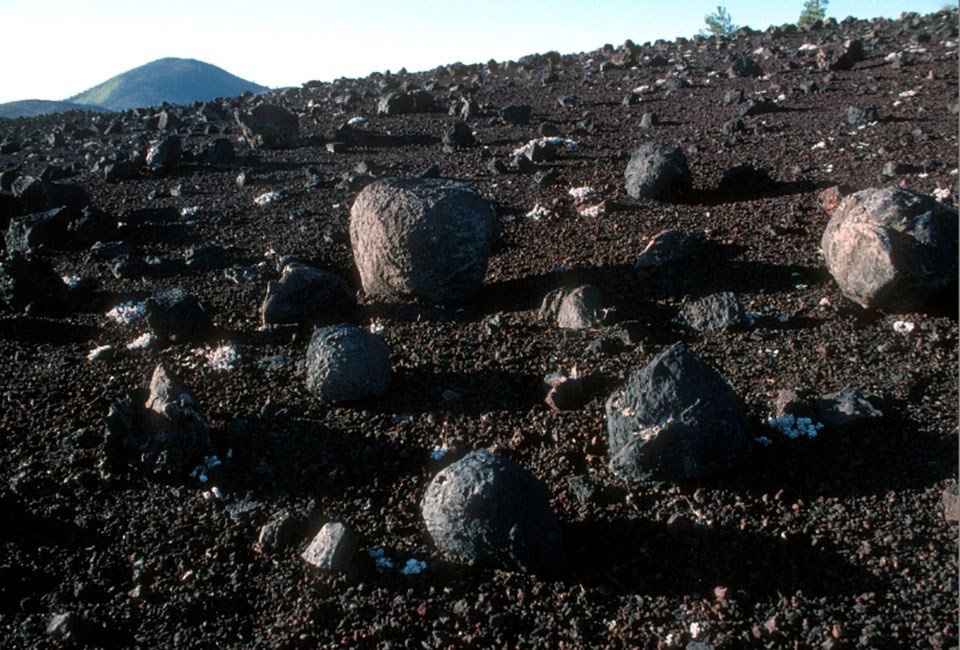
NPS photo.
Pyroclasts
Pyroclasts are classified by size and shape as follows:
-
Ash: A pyroclast grain with a diameter less than 2 mm (0.08 inches).
-
Lapilli: A pyroclast with a mean diameter between 2 and 64 mm ( 0.08 and 2.5 inches).
-
Block: A pyroclast with a diameter greater than 64 mm (2.5 inches) and that has an angular shape. Blocks are solid during eruption and transport.
-
Bomb: A pyroclast with a diameter greater than 64 mm (2.5 inches) and that has a rounded or ellipsoidal shape that indicates that it was wholly or partially molten during eruption and flight.
Types of Volcanic Bombs
Most volcanic bombs solidify during flight, although some are still partially plastic when they land. The shapes of bombs are determined largely by the viscosity of the magma/lava, the length and velocity of flight, how rapidly they cooled, the expansion of vesicles (gas bubbles) within them, and any deformation upon impact. Most volcanic bombs are made of basaltic or intermediate lavas because these lava types have relatively low viscosity.
-
Spindle bombs: Almond-shaped bombs that result from the tearing apart of ribbons of lava either during flight or upon impact with the ground.
-
Ribbon bombs: Elongated ropy-shaped bombs.
-
Cowdung bombs: Very fluid bombs which flatten or splash upon landing.
-
Breadcrust bombs: Bombs with a fractured surface from a quickly quenched crust that was fractured by continued expansion of vesicles within a molten core. Most breadcrusting forms after landing. Breadcrust bombs are usually andesitic in composition.
-
Cored bombs: Bombs that have a nucleus of solid material. The solid core may be fragments of previously solidified magma from the volcano, or a xenolith (foreign rock fragment from either the crust or the mantle).
Spindle, ribbon, and cowdung bombs are commonly produced during Strombolian or other low intensity eruptions that form cinder cones.
Pele’s Tears and Hair
Pele’s Tears and Pele’s Hair are delicate pyroclasts produced in Hawaiian style eruptions such as at Kilauea, a shield volcano in Hawaii Volcanoes National Park. Both are named after Pele, the Hawaiian volcanic deity.
-
Pele’s Tears: Small droplets of volcanic glass shaped like glass beads. They are frequently attached to filaments of Pele’s Hair.
-
Pele’s Hair: Thin threads of volcanic glass that are produced during eruptions of gas-rich fluid lavas. These filaments form as lava droplets are drawn into threads. Learn more at Hawaiʻi Volcanoes—Pele's Hair
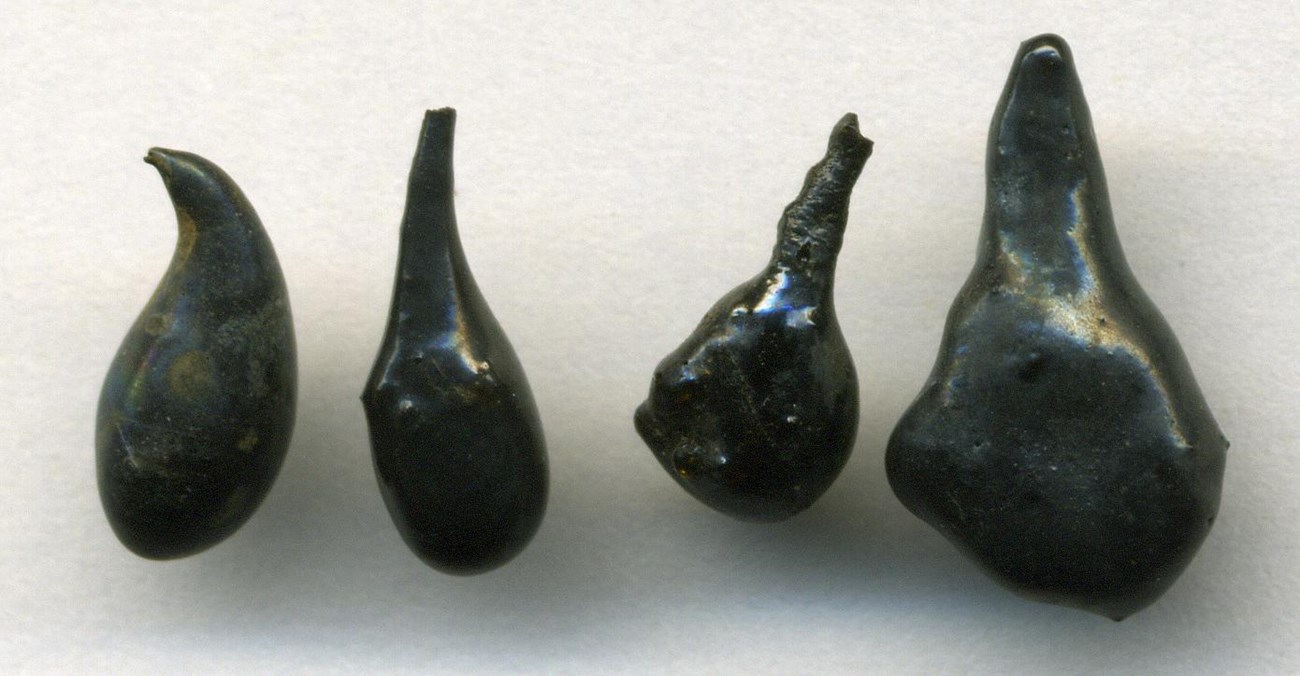
Photo from James St. John on Flickr.
Pumice, Scoria, and Cinders
Pumice, scoria, and cinders are specific types of highly vesicular pyroclastic rocks, although the distinction between them is somewhat arbitrary. Vesicles are small cavities in volcanic rocks that formed as bubbles that grew because of the exsolution of gases escaping from the magma upon eruption. Vesicles may be spherical, lens-shaped, tubular, or highly irregular.
-
Pumice: A light-colored, highly vesicular rock in which small, closely-spaced vesicles are separated by very thin walls of glass. It is usually formed in highly explosive pyroclastic eruptions. Pumice is typically rhyolitic in composition, but dacite or rhyodacite pumice may also form. Pumice typically has such a high concentration of vesicles that it is buoyant and can float on water.
-
Scoria: A dark-colored highly vesicular rock in which the vesicles are so numerous that they constitute the majority of the volume of the rock. Scoriaceous structure occurs in lapilli and bombs thrown out in explosive eruptions of mafic to intermediate compositions. It also can form in the rapidly cooled upper and lower surfaces of mafic lava flows.
-
Cinder - A colloquial term for a small nut-size to fist-size, or larger, piece of red or black highly vesicular lava that cooled in air during flight after eruption from a vent. It is roughly synonymous with scoria.
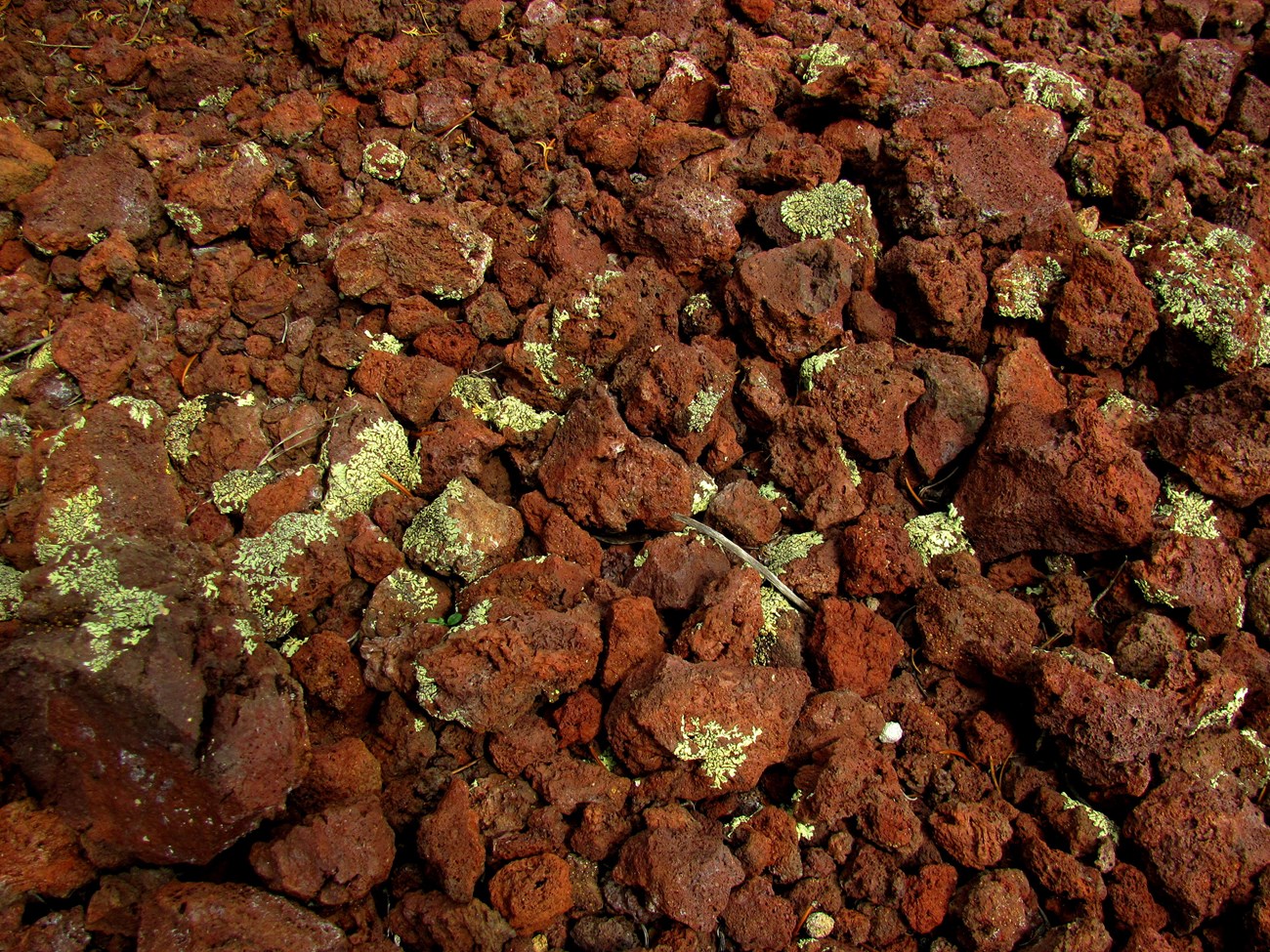
NPS photo by John Kuehnert.
Pyroclastic Deposits
Pyroclastic deposits may consist of both unconsolidated accumulations of pyroclasts, and rocks made up of pyroclasts.
Pyroclastic rocks have characteristics of both igneous or sedimentary rocks. They are composed exclusively of volcanic materials, yet are made up of fragments and grains like sedimentary rocks, and may be reworked by wind and flowing water. Welding is the process by which hot plastic pyroclasts are lithified into rock as a result of heat and the weight of overlying material.
-
Tephra - The collective term for unconsolidated pyroclastic deposits.
-
Tuff - A consolidated pyroclastic rock made primarily of ash.
-
lgnimbrite - An ash-flow tuff is deposited by a pyroclastic flow (a “volcanic hurricane”) which forms from either the collapse of a large eruption column or a dome, or from “boiling over” in an explosive eruption (no large eruption column produced).
-
Spatter - An accumulation of highly molten bombs that land while still molten and weld together to form solid rock, spatter cones, or sometimes feed lava flows. Spatter is formed from fire fountains and spatter deposits are only formed near a vent.
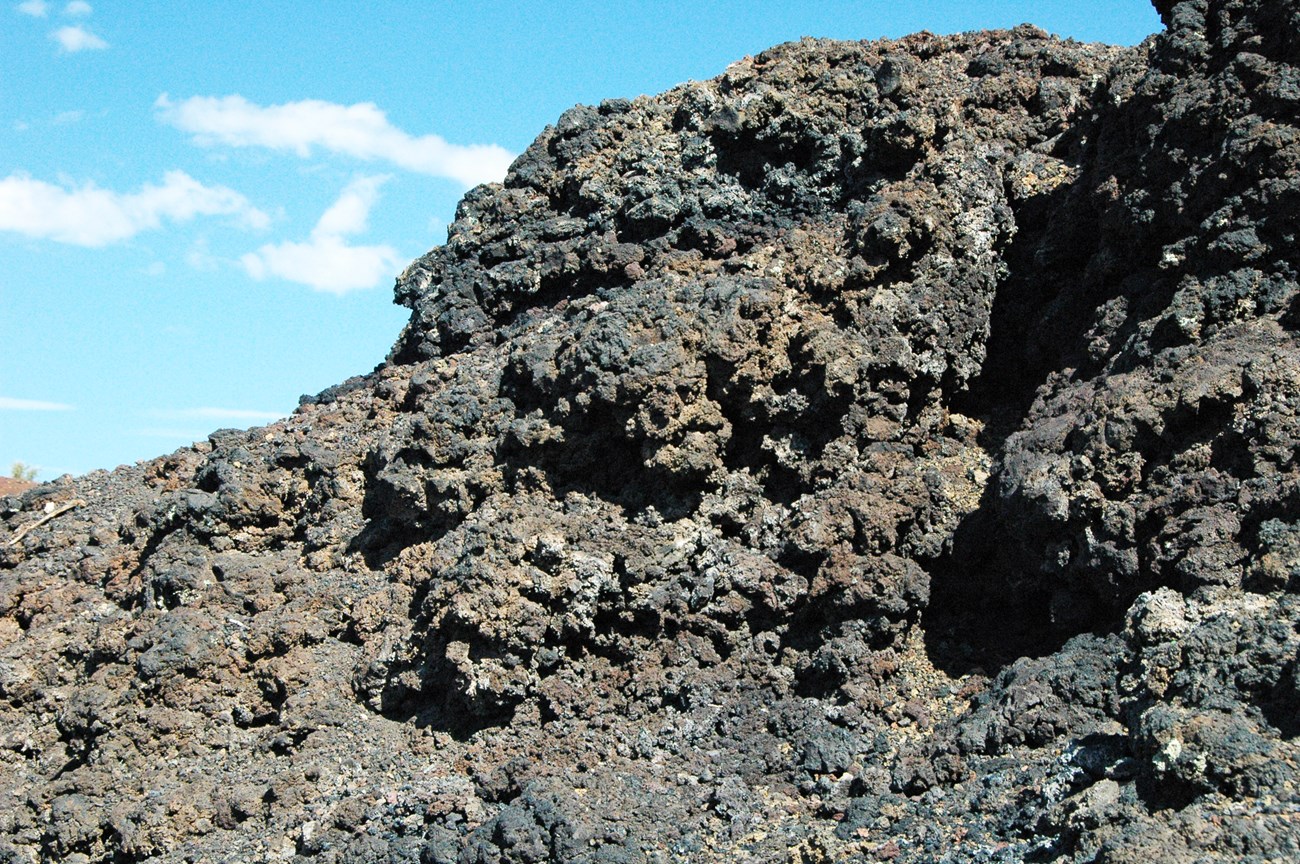
John St James flickr image.
Learn More
Photo Album
Featured Parks
-
Craters of the Moon National Monument (CRMO), Idaho—[CRMO Geodiversity Atlas] [CRMO Park Home] [CRMO npshistory.com]
-
El Malpais National Monument (ELMA), New Mexico—[ELMA Geodiversity Atlas] [ELMA Park Home] [ELMA npshistory.com]
-
Hawai’i Volcanoes National Park (HAVO), Hawai’i—[HAVO Geodiversity Atlas] [HAVO Park Home] [HAVO npshistory.com]
Related Links
Last updated: April 18, 2023

